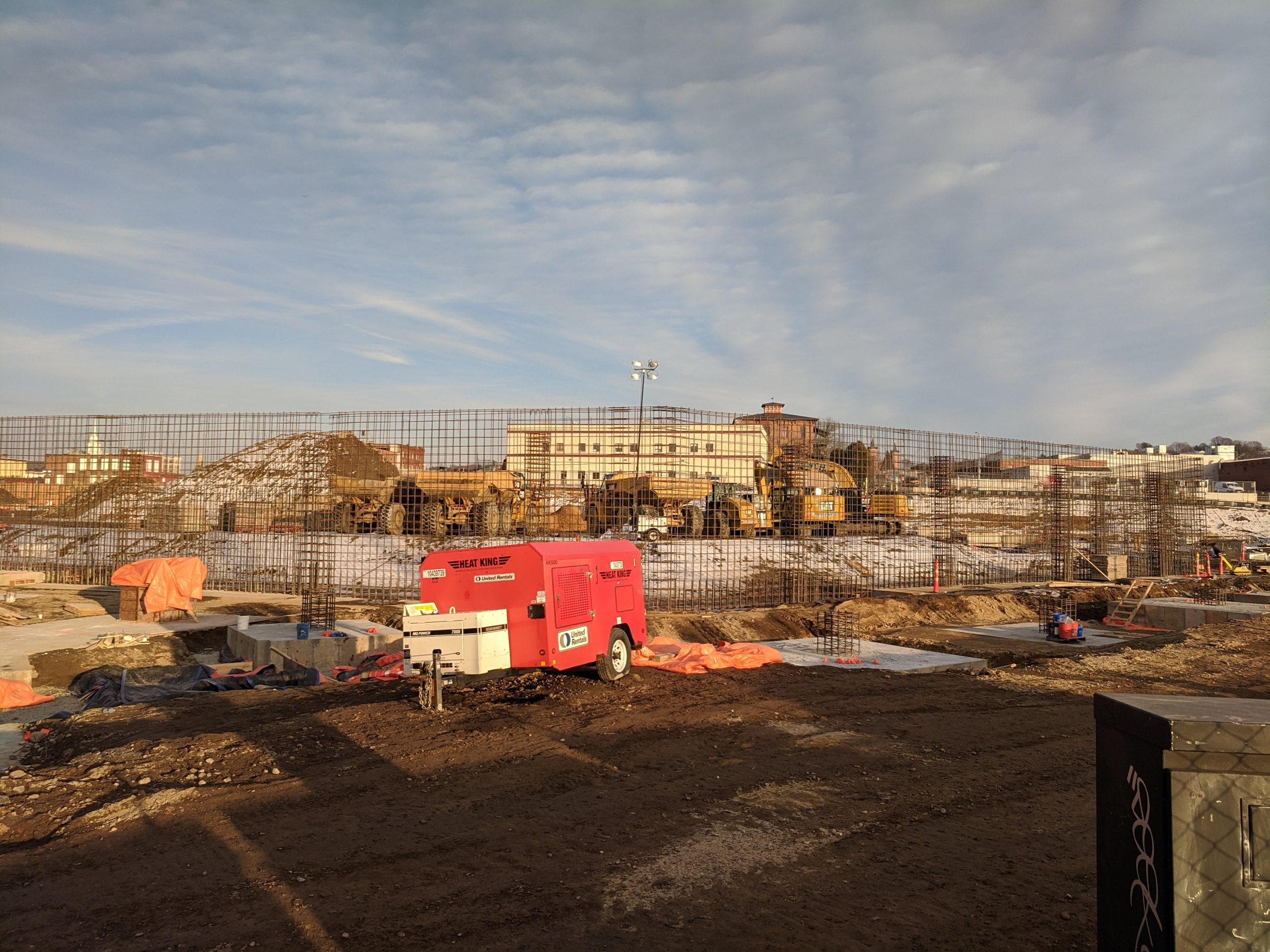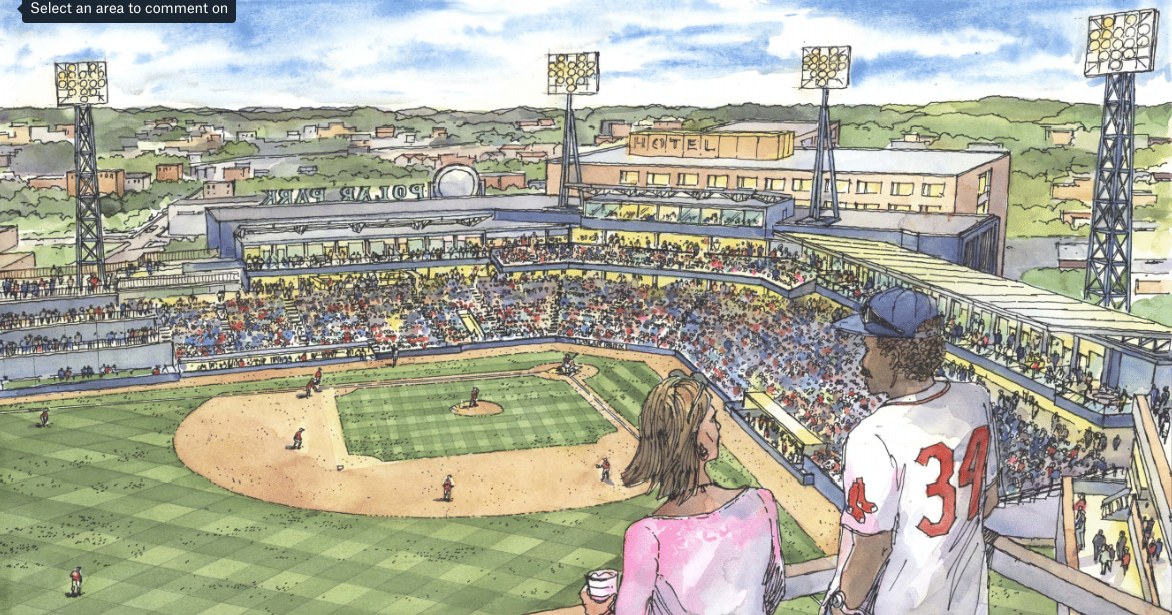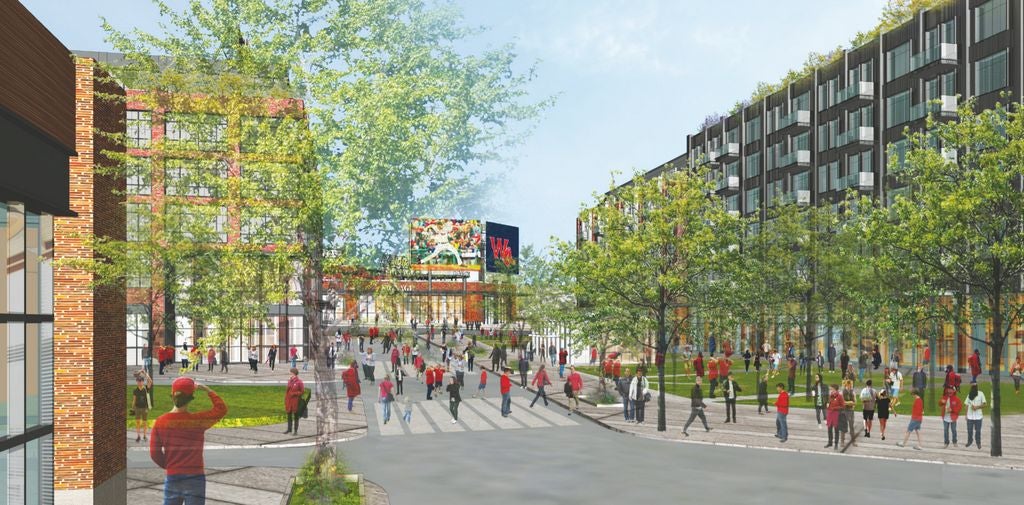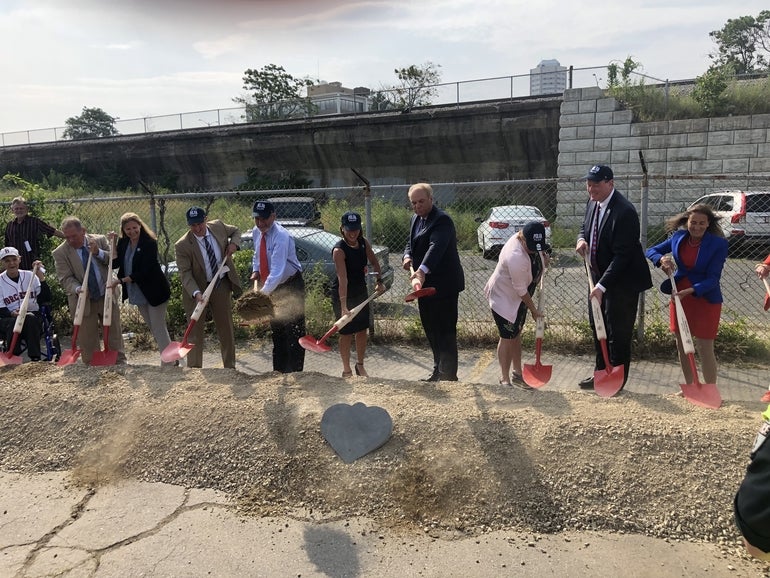Due to extra construction and property acquisition costs, the planned baseball stadium the City of Worcester is building for the Pawtucket Red Sox now will cost $132 million, with the city and the team paying for the extra expense with increased ticket and parking fees, along with using the added tax collections from more properties in the Canal District to pay down the ballpark debts.
In addition, nearly all of the surrounding residential, retail and office development will no longer open with the stadium in 2021 as planned. The two hotels planned for across from the stadium, for example, will now open in May 2022.
These project changes were announced in City Manager Edward Augustus’ filing on Friday for the Worcester City Council’s agenda for its meeting Tuesday. The Worcester Telegram & Gazette first reported the news Friday evening.
The stadium, known as Polar Park, still will open on time for the Pawtucket Red Sox, the Triple A minor league affiliate of the Boston Red Sox, to make their debut as the Worcester Red Sox in April 2021, according to Augustus’ filing.

In Tuesday’s meeting, Augustus is asking the City Council to approve a $32-million loan to cover the additional needed ballpark funding.
Of the extra expenses, $9.4 million was caused by a projected increase of the construction of the stadium itself, due to complexities in the design and the property, and a 5% annual increase in the cost of construction.
The cost of just the stadium construction is now $99.4 million. Another $32.5 million in public money is going toward infrastructure improvements around the stadium, including streetscape, roadway, parking and wayfinding, according to Augustus’ filing.
[Related: Polar Park joining an arms race for more elaborate, immersive ballpark experiences]
The $9.4-million expense will be borne by the team, but that amount will be paid down because the team will receive revenue from the increased facility fee on tickets for stadium events. The fee for baseball games will rise from 50 cents to $1, while the fee for non-baseball events (such as concerts) will rise from $1.00 to $1.25.
The facility fee was to be used to pay for stadium upkeep. According to Augutus’ filing, the first $200,000 in collections will go toward stadium upkeep, and the rest will go for the team to cover the $9.4 million in added expense.
The DCU Center in Worcester has a similar facility fee on its tickets, which can be up to $4. The fee for Worcester Railers’ tickets is $2, according to Augustus.
The other part of the increased expenses creating the need for the $32-million loan are the land acquisition and site preparation costs. Those costs rose because of several factors: environmental remediation, the city needing to buy more properties than anticipated, a complicated retaining wall system, and the relocation fees for businesses moving, including a $6-million expense to move the data switching center for the firm Windstream, which initially said it needed two years to complete a relocation.

Augustus said in his letter the added expense for the Windstream relocation was worth it, since a two-year timeline would have derailed the stadium’s ability to open by April 2021.
To cover these costs, the city plans to increase the parking costs around the stadium from $5 to $8 for standard parking and from $10 to $12 for premium parking.
[Related: Polar Park has 21 months to avoid typical cost & delay issues in stadium construction]
In addition to using increased ticket and parking fees to cover the stadium cost increase, the city plans to incorporate more properties in the Canal District into the special taxing district, where the tax collections are used to pay the stadium bonds, on top of the $36 million the team is contributed in upfront and annual lease payments. The properties being added to the special taxing district include the extra properties the city bought as part of its land acquisition for the stadium project.
“No existing city tax revenue will be used to fund the ballpark construction,” Augustus wrote in the memo.
Surrounding development
The planned on-site development surrounding the stadium from Boston firm Madison WG Holdings and developer Denis Dowdle has been changed to open in a number of phases, after the stadium opens in 2021.
A 120,000-square-foot office building overlooking the stadium’s left field, with retail and restaurants on the ground floor and the roof, will be the only Madison development opening near the time the stadium opens, as the skin, shell and core of the construction will be completed with the opening of the ballpark, Augustus wrote.
[Related: Worcester, Madison Properties file Canal District ballpark plans]
The two planned hotels now will be dual-branded and share one lobby, with one 140-room traditional hotel and one 122-room boutique hotel, both featuring first-floor restaurant and retail. The hotels are expected to be ready for occupancy in May 2022.

The planned two multi-family residential complexes – each with first-floor restaurant and retail – are expected to open separately, in September 2021 and December 2022. The two projects will total 350 residential units.
Dowdle also is adding another property, a planned 60,000-square-foot laboratory building, designed to be marketing to the life sciences industry.
CORRECTION: A previous version of this story incorrectly said City Manager Edward Augustus asked for the City Council to approve a bond of $33 million to cover additional ballpark costs. The correct amount is a $32-million loan.

